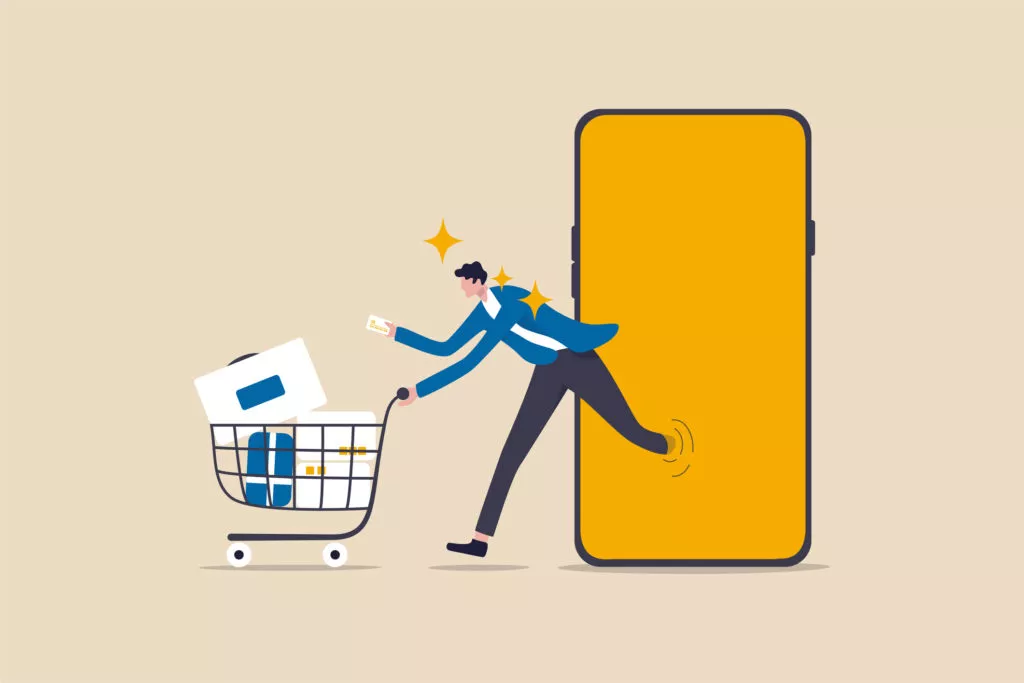Facebook commerce, or F-commerce, has grown throughout the pandemic and has been a great boon to the company’s stock, even amid privacy concerns and Apple’s new policies affecting gathered user data.
But that doesn’t mean the Facebook storefront feature is in trouble – instead, it’s pivoting towards rolling out features for businesses and products that benefit more from the social network experience, and shared shopping elements such as public wish lists and purchasing discussions.
On the success of Facebook’s burgeoning retail and ecommerce tools, surveys found that up to 85 percent of respondents purchased an item they had first discovered on Facebook. Furthermore, nearly three quarters of Facebook’s users rely on the platform as a means to find new brands and products.
Facebook’s new features seem particularly targeted towards specific consumer goods (especially electronics, beauty products, and certain fashion accessories) and virtual products, which draw the most interest. If you’re interested in making the most of Facebook’s ecommerce environment and massive userbase – over 2.8 billion monthly users, at this point! – then you’ll need to be up-to-speed on what the platform has to offer.
Overview
Exploring the New Features
Facebook’s new and planned additions to its Facebook Shop and general ecommerce features include four major changes:
- First, major additions to how Facebook Shop can utilize the Facebook family of products to interact with customers and sell products, including through WhatsApp and Facebook Marketplace.
- Second, Facebook is making changes to personalized ads.
- Third, new features are rolling out making use of mobile AR.
- And fourth, customer review features on Instagram.
We go over each change below.
More Shops in More Places
The first new feature is the ability to bring your Facebook Shop products into the Facebook Marketplace, starting in the US (with an international rollout in the future, presumably). With over 2 billion monthly active Facebook users, Marketplace alone has over 1 billion users browsing products and checking in every month. That’s a lot of potential leads, and through this new feature, you won’t have to present your products on Marketplace as a private account or single individual.
Furthermore, Facebook is integrating shop functionalities into WhatsApp, so shop owners and managers can display their inventory and share product information with customers via the company’s messaging app, and answer customer questions at the point of purchase. Any business’ on-site inventory can be accessed through a shopping bag icon in the WhatsApp chat, even while answering customer questions.
A lot of businesses that advertise through Facebook and run an active shop on the platform presumably already use both Marketplace and WhatsApp to further promote their products and interact with customers – this feature aims to help streamline the shop management experience, and help businesses reach a wider on-site audience, with about half as much trouble.
Individualized Shop Ads
Facebook Ads are one of the company’s biggest sources of revenue, and these include ads for on-site shops. But Facebook is taking things a step further by launching a new brand of personalized advertising for on-site shops, pointing customers towards a shop’s curated inventory.
Rather than advertising a single product or orienting a customer towards the shop’s storefront in general, these new ads aim to utilize the user’s previous shopping history to pick and display products that best suit them.
In other words, users will see ads from your shop personalized towards their tastes and interests, showcasing a line of curated products that Facebook’s algorithms consider most suited to the user.
Facebook is planning to expand functionality on this feature even more in the future, by allowing companies to offer exclusive promotions to specific customers, further personalize their product list, and more.
eCommerce AR (Augmented Reality)
The ongoing pandemic has hit brick-and-mortar stores hard, and plenty of people who have had to turn to e-commerce miss the experience of physically being in a store and browsing their selection.
While this upcoming feature doesn’t replace that experience, Facebook’s planned AR storefronts would allow shops to create and provide a virtual storefront and shopping experience for users to enjoy. Facebook is planning to implement these through newly-developed APIs, which aim to make it easier for businesses both small and large to implement AR and let their customers try their products virtually.
For example, one possibility would be to try a new lipstick via AR and your phone’s front-facing camera. Facebook is also planning to utilize its personalized ad experience to recommend relevant products to users through the AR storefront, based on their shopping history – like a virtual retail worker, suggesting new items based on seasonality or style.
The first industry to test the feature is the beauty and makeup market, and support is planned for other businesses in the months and years to come.
Instagram Customer Reviews
Last but not least, Facebook is expanding its customer review feature on Instagram’s new Instagram Shopping feature. In addition to written reviews, customers will be able to upload pictures and videos of the product, much like on Amazon and other online retailers.
Facebook stated that: “These changes will help people make more informed decisions on what to buy, and will let businesses know if they are meeting customer expectations.”
In general, the new features seem to be aimed at further incentivizing an individualized user shopping experience, while allowing users to share and promote their experiences, or provide information on a product (including negative reviews).
The new level of personalized ads for shops might draw privacy concerns, but the other features will likely be openly welcomed as simple quality-of-life improvements for both storefront managers and customers, especially the integration of Facebook Shops into Marketplace and WhatsApp.
It remains to be seen how authentic or useful the new “try on” augmented reality features will be, as they become available to a larger group of businesses. It makes sense to start with the beauty industry, where customers can get an idea of what a product might look like on them through camera filters. But achieving the same effect with other products might be a bit more difficult.
Contact us today to get the conversation started!










